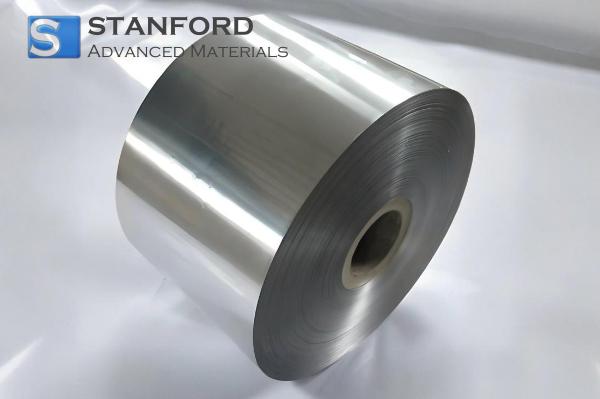Thallium: Element Properties And Uses
Introduction to Thallium
Thallium is a seldom seen and highly toxic element with an atomic number of 81 and symbol Tl. While fairly uncommon in the Earth's crust, having a relative abundance of about 0.7 parts per million, it has been put to widespread use in specialised industrial applications due to its physical and chemical properties. Its density of 11.85 g/cm³ and relatively low melting point of 304°C render it useful for use in low-melting alloys, speciality lenses, and electronics.
Discovery and Naming
British scientist William Crookes discovered thallium in 1861 while analysing deposits of sulphuric acid of iron pyrites. While performing flame spectroscopy, Crookes noticed a green spectral line and hence purified the new element. The new element was named "thallium" based on the Greek word "thallos," denoting "green shoot" or "twig," because it displays a green emission line when observed under the spectroscope.
In particular, modern spectral analysis allowed Crookes to identify thallium before it was separated by chemical processes, a testament to the effectiveness of spectroscopy in element discovery, a procedure still in everyday practice in modern analytical chemistry.
Chemical Properties Description
Thallium also exists in +1 and +3 states of oxidation, both stabilised at +1. Its chemistry is slightly similar to that of the alkali metals, and its +3 compounds exhibit somewhat similar behaviour to those of aluminium and indium. Major chemical properties are:
• Combustion of hydrogen to give thallium(I) oxide (Tl₂O) and thallium(III) oxide (Tl₂O₃).
• Halide formation, e.g., thallium(I) chloride (TlCl) and thallium(III) bromide (TlBr₃).
• Low electrochemical potential, utilised in certain electronics.
These chemical properties have led thallium to find niche applications in electronics, optics, and advanced materials.
Physical Properties Data Table
|
Property |
Value |
Unit |
|
Atomic Number |
81 |
- |
|
Atomic Weight |
204.38 |
g/mol |
|
Density |
11.85 |
g/cm³ |
|
Melting Point |
304 |
°C |
|
Boiling Point |
1473 |
°C |
For more information, please check Stanford Advanced Materials (SAM).
Production and Preparation Techniques
Thallium is not mined as such. It is recovered as a by-product from the smelting of zinc, lead, and copper sulphide ores, as well as from ores containing selenium such as crookesite (Cu₇(Tl,Ag)Se₄) and lorandite (TlAsS₂).
Production Process:
1. Concentration of Ore: Flotation and gravity separation methods are used for the concentration of thallium-bearing minerals.
2. Chemical Separation: The concentrates are treated with hydrochloric or sulphuric acids to extract thallium compounds.
3. Reduction: The reduction of thallium to metal is done using reducing agents such as sodium or zinc.
4. Refining: The further purification is achieved through distillation or zone refining to produce highly pure thallium utilised in electronics and optics.
Global thallium production is restricted, roughly 50–60 metric tons per annum, and the main producers are Russia, China, and Kazakhstan.
General Applications and Industrial Uses
Though toxic, the properties of thallium make it valuable in specialist uses:
1. Electronics:
Used in low-melting point alloys used in switches and fuses.
Used in certain semiconductors, where its +1 oxidation state is for controlled electrical conduction.
2. Optics:
Clear thallium bromide-iodide crystals (KRS-5) suitable for application to IR detectors and thermal imaging across the infrared range (0.6–40 μm) are available.
The infrared night vision cameras sold in military standard models use KRS-5 lenses, and hundreds of them have already been shipped worldwide.
3. New Materials:
Thallium compounds find application in altering superconductors and high-temperature oxide ceramics, wherein addition of thallium with low concentration increases critical temperature (Tc). Thallium-doped bismuth cuprates, for instance, show Tc ~125 K, which makes useful superconducting application possible.
Thallium compounds have been conventionally used as rodenticides and insecticides, but due to the risk of severe poisoning, these have been banned or strictly regulated in the majority of countries.
Environmental and Health Concerns
Thallium is toxic and affects the nervous system, liver, kidneys, and cardiovascular system. Brief exposure to thallium can lead to hair loss, neurological conditions, and even death at the dose level of 10–15 mg/kg body weight. Long-term exposure, most often from poisoned water or in occupational settings, can build up over decades.
Regulatory restrictions are severe: thallium in potable water is restricted to 2 ppb (μg/L) by the EPA, and OSHA's safe working exposure is 0.1 mg/m³ for an 8-hour TWA.
Industrial use: A 2000 South American thallium poisoning involved several hundred people who required medical observation after being exposed to residues associated with mining. This indicates the dangers of the element and the need for stringent safety precautions.
Frequently Asked Questions
What is thallium?
A highly toxic, rare element (at. no. 81) used in electronics, optics, and new materials.
How is thallium produced?
Produced as a by-product of zinc, copper, and lead ores through physical concentration, acid leaching, and reduction processes.
What are the main industrial uses of thallium today?
Low-melting alloys, semiconductors, IR optics (KRS-5), and superconducting ceramics.
Why is thallium chemically unique?
Its neutrality in +1 and +3 oxidation states and low density and melting points give it specialised applications in high-technology materials.
How is thallium poisoning controlled in industry?
Close handling practices, personal protective equipment (PPE), and environmental control limit exposure in manufacturing and research settings.

 Bars
Bars
 Beads & Spheres
Beads & Spheres
 Bolts & Nuts
Bolts & Nuts
 Crucibles
Crucibles
 Discs
Discs
 Fibers & Fabrics
Fibers & Fabrics
 Films
Films
 Flake
Flake
 Foams
Foams
 Foil
Foil
 Granules
Granules
 Honeycombs
Honeycombs
 Ink
Ink
 Laminate
Laminate
 Lumps
Lumps
 Meshes
Meshes
 Metallised Film
Metallised Film
 Plate
Plate
 Powders
Powders
 Rod
Rod
 Sheets
Sheets
 Single Crystals
Single Crystals
 Sputtering Target
Sputtering Target
 Tubes
Tubes
 Washer
Washer
 Wires
Wires
 Converters & Calculators
Converters & Calculators
 Write for Us
Write for Us




 Chin Trento
Chin Trento



